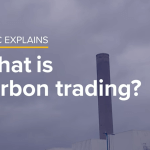How do carbon markets work?

In theory putting a price on carbon emissions should incentivise businesses to stop polluting. So why have carbon markets failed to achieve their goal of reducing global emissions?
The Inadequacy of Carbon Pricing: Why Carbon Markets Have Failed to Reduce Global Emissions
In theory, putting a price on carbon emissions should incentivise businesses to stop polluting due to increased costs associated with the emissions. However, carbon markets have failed to achieve their intended goal of reducing global emissions. This is because, in practice, the price of carbon emissions is too low to provide a sufficient incentive to businesses to reduce their emissions. Additionally, there are often loopholes in the regulations surrounding carbon pricing that allow businesses to avoid the costs associated with emissions. Therefore, the carbon markets have failed to provide sufficient motivation to businesses to reduce their emissions.
The Failure of Carbon Pricing: Understanding the Loopholes and Inadequate Incentives for Businesses to Reduce Emissions
The issue of carbon pricing has been a common solution to the climate crisis for many years, however, it has proven to be largely ineffective. This is due to the fact that there are often loopholes in the regulations surrounding carbon pricing that allow businesses to avoid the costs associated with emissions. As a result, businesses are not provided with a sufficient financial incentive to reduce their emissions. This has led to the failure of the carbon markets to provide adequate motivation to businesses to reduce their emissions, thus leading to an unsatisfactory reduction in overall emissions.
Read also about Singapore’s new carbon exchange







